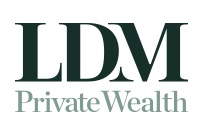Quarterly Property Review
After a bumper 21/22 financial year, it’s clear Australia’s property boom is over (at least on paper) however values are still above pre-covid prices.
Unsurprisingly, experts have pointed the finger at the RBA’s four consecutive cash rate increases, bringing the official figure to 1.85 per cent in August. Property insiders believe there are still more on the horizon and this coupled with increasing inflation has caused buyers to back off and sellers to be spooked.
According to CoreLogic’s national Home Value Index, Australian dwelling values fell by -1.3 per cent in July, or -2 per cent over the quarter.i The shift is the third consecutive month the gauge has fallen after values skyrocketed by 28.6 per cent during what is now known as the pandemic growth phase.
Tim Lawless, CoreLogic’s research director, said values are likely to slip further as interest rates continue to climb for the rest of 2022. “The rate of growth in housing values was slowing well before interest rates started to rise, however, it’s abundantly clear markets have weakened quite sharply since the first rate rise on May 5,” he said.
“Although the housing market is only three months into a decline, the national Home Value Index shows the rate of decline is comparable with the onset of the global financial crisis in 2008, and the sharp downswing of the early 1980s. In Sydney, where the downturn has been particularly accelerated, we are seeing the sharpest value falls in almost 40 years,” he said, adding that Sydney’s highly indebted households were more sensitive to higher interest rates.
With winter almost behind us, all eyes are on the spring selling season when more homes traditionally come onto the market. Mr Lawless said the warmer months will prove to be interesting, especially for keen buyers, if demand remains at low levels.
“Based on the pre-COVID average, we have typically seen an 18.9 per cent rise in the number of new listings between the winter and spring seasons. A more substantial flow of advertised stock against a backdrop of falling demand is great news for active buyers, who will have more choice and less urgency, but bad news for vendors, who could find selling conditions become more challenging as advertised stock levels rise,” he said.
Capital cities are divided
In the three months to July 31, our capital cities combined recorded a -2.6 per cent drop, but on a city-by-city level each market is proving to be running its own race, in both directions.
Four of the eight capital cities were still in positive growth territory for the quarter with Adelaide out on top at 3.6 per cent. Darwin’s values rose 1.9 per cent, Perth saw a 1.2 per cent rise and Brisbane experiences very modest growth of 0.1 per cent.
Our priciest city, Sydney, was home to the largest price correction over the quarter with a significant -4.7 per cent dip in dwelling values followed by Melbourne with a decrease of -3.2 per cent. In Hobart values fell by -1.3 per cent and in Canberra they were down -0.9 per cent.
Regions finally take a turn
Although regional price growth outstripped the capitals last year, values outside “The Big Smoke” have finally started to weaken. CoreLogic’s combined regionals index revealed its first monthly decline since August 2020 of -0.8%. Its quarterly change was a humble -0.2 per cent. When drilling down a little deeper, however, it’s only the regional markets in NSW and Victoria steering the index into negative growth during the past quarter at -0.8 per cent and -0.5 per cent respectively. Regional South Australia is still very much in growth mode with a 4.2 per cent increase over the same period.
“Dwelling values across CoreLogic’s combined regionals index were up 41.1 per cent from the pandemic trough to the June peak, compared with a 25.5 per cent rise across the combined capitals index. The stronger growth reflects a significant demographic shift towards commutable regional markets, which is likely to have some permanency as more workers take advantage of formalised hybrid employment arrangements,” Mr Lawless said.
City snapshots
Melbourne
Although the quarterly movement was down -3.2 per cent for all dwellings to a median price of $791,999, values are up 0.3 per cent for the year to July 31. The highest annual dwelling change was in the suburb of Melbourne City where there was an increase of 12.2 per cent to a median of $539,016. Investors looking at the Victorian capital can expect an average gross rental yield of 3 per cent.
Sydney
The Harbour City saw values fall by -4.7 per cent in the quarter (the greatest dip across all capital cities) to a median of $1.087 million, but annually values are still up 1.6 per cent. Bringelly in Sydney’s southwest saw the greatest dwelling value growth at 13.7 per cent to $1.081 million. The average gross rental yield for Sydney is 2.8 per cent.
Brisbane
Queensland’s capital experienced an almost neutral quarter of 0.1 per cent growth, but a significant annual increase of 22.1 per cent. Dwellings in Beaudesert experienced the highest growth for the year to July 31 with a jump of 34.6 per cent to $549,043. The median dwelling value in Brisbane is $781,850 and the average rental yield in the city is 3.6 per cent.
Canberra
The median dwelling price in Canberra is now the second priciest in the country at $925,973 after a quarterly change of -0.9 per cent, but an annual increase of 16.5 per cent. Molongo’s dwelling price increased 23.4 per cent annually to $789,374 making it the highest performing suburb in the nation’s capital. Currently, rental yields in the city are at 3.8 per cent.
Perth
The West Australian capital is still home to some of the cheapest metropolitan property in the country with a dwelling median of $560,020 (only behind Darwin’s $506,860). Values rose 1.2 per cent over the past quarter and the annual growth is sitting at 5.5 per cent. Perth’s rental yield is 4.4 per cent and the suburb of Rockingham saw the greatest annual change with a rise of 9.1 per cent to a median of $477,036.
To find out how you might be able to purchase a property in the current market, reach out to us today.



